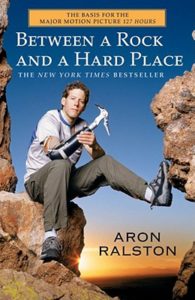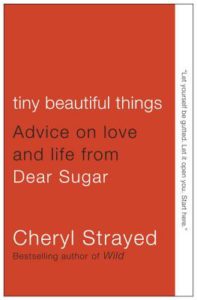 Summer’s heat and humidity can be a Petri dish for the doldrums, that figurative name we give to despair spawned of monotony and lethargy—a ceaseless sameness of no escape.
Summer’s heat and humidity can be a Petri dish for the doldrums, that figurative name we give to despair spawned of monotony and lethargy—a ceaseless sameness of no escape.
In other words, Stuck. It rhymes with ….
In reality, the Doldrums are an equatorial region of the Atlantic and Pacific Oceans where extremely low-pressure zaps the wind from the air. Not a problem if you have another source of power, but being trapped for weeks on becalmed waters drove some old-time, wind-dependent mariners to madness—and some to an early grave.
Myriads of books embody the pathos of stuckedness with many variations on the theme: some literal, others figurative; the man-made, self-made and forces of nature; some characters who are temporarily bound and others who never manage the great escape.
“The Tie that Binds” contains a most eloquent and haunting passage that likens the twice daily chore of milking cows to the eternally damned Sisyphus and his boulder. After I read it, I erased all pastoral images from my mind’s eye of fair maids milking gentle Guernseys.
Set in the American High Plains, the book’s straightforward dialogue made me feel like I was eavesdropping at the local diner or feed store, yet the writing also has a lyrical tone. The story is a lens for how disappointment, hardship, and bitterness can weave into a soul-sucking snare:
“So when I say they were stuck, I don’t mean they were stuck just a little bit. I don’t mean they were just sort of stuck the way you might be if you stepped into some mud and you were able to get out of it if you made the effort, and once you were out of it about all the loss you’d have to show was that you might have to leave a pair of good new shoes behind you in the mud. No, I mean they were deep stuck…”
“The Tie That Binds” was the first novel by the late Kent Haruf. Although not as well-known as “Plainsong,” his National Book Award Finalist, it is beautifully written with keen insights into the human character.
Another place on the “stuck spectrum” is a book whose title perfectly matches its content — “Between a Rock and a Hard Place.” In this true account, hiker-turned-author Aron Ralston chronicled his ordeal of being trapped in a Utah canyon after a boulder smashed his right hand and pinned him in place for five days.
 You would think there wouldn’t be a lot to say about being held hostage by a gigantic rock, other than perhaps, “I’m stuck. It rhymes with…” Although he was out of food and fresh water, wondering whether the Calvary or the coyotes, buzzards and the Grim Reaper would arrive, Ralston recaptured scenarios from his past, his (then) present dilemma, hopes and plans for escape, and his potential demise—all while baking in the heat of the day, balanced by the misery of cold nights.
You would think there wouldn’t be a lot to say about being held hostage by a gigantic rock, other than perhaps, “I’m stuck. It rhymes with…” Although he was out of food and fresh water, wondering whether the Calvary or the coyotes, buzzards and the Grim Reaper would arrive, Ralston recaptured scenarios from his past, his (then) present dilemma, hopes and plans for escape, and his potential demise—all while baking in the heat of the day, balanced by the misery of cold nights.
“The shivers begin, wracking my core with furious vengeance, and I wonder if the voice let me elope too long this time. There is always the noiseless voice. It stays in my real body, the watch-keeper that calls me back before I quiver over the invisible brink into hypothermic sleep…”
I had already watched the adapted-from-the-book movie, “127 Hours,” and despite that I knew how the story ends, I was still riveted while I marveled at Ralston’s ingenuity and resilience. I questioned the strength of my own mettle. Would I have given up or would I have gnawed my arm off to escape? I hope to never know.
I almost skipped “Tiny Beautiful Things: Advice on Love and Life from Dear Sugar” (not being in the advice-seeking market), but I’m glad that I did not ignore the advice to add the book to my reading list. It turns out this compilation of columns is from a time when Cheryl Strayed, author of the best-selling “Wild,” worked as an online advice guru for The Rumpus.
One chapter titled, How to Get Unstuck, features Sugar’s poignant exchange with a reader who was racked in grief following a miscarriage. In fact, much of the book’s content is from readers looking for help, hope, perspective and insight that will to help them move beyond their quandary and out of the doldrums (i.e., become unstuck).
At the heart of any ‘new’ sage advice, we often find centuries old wisdom retold in a fresh voice or with a new parable, which still makes it worthwhile reading. Despite my original hesitancy, I discovered “Tiny Beautiful Things” is comprised of tiny, beautiful insights offered with candor, compassion, humor, authenticity, and laced with earthiness.
I suspect it is only a black swan of a person who has never been, or felt, stuck at some point in their life, not necessarily trapped by a VW-sized boulder, but perhaps by the kind that is wrought by life’s happenstance or circumstance.
Some books make us cry, others cause us to cheer, and some serve to remind us that the best antidote for being stuck is to hold onto what it feels like to have the wind back in our sails.
